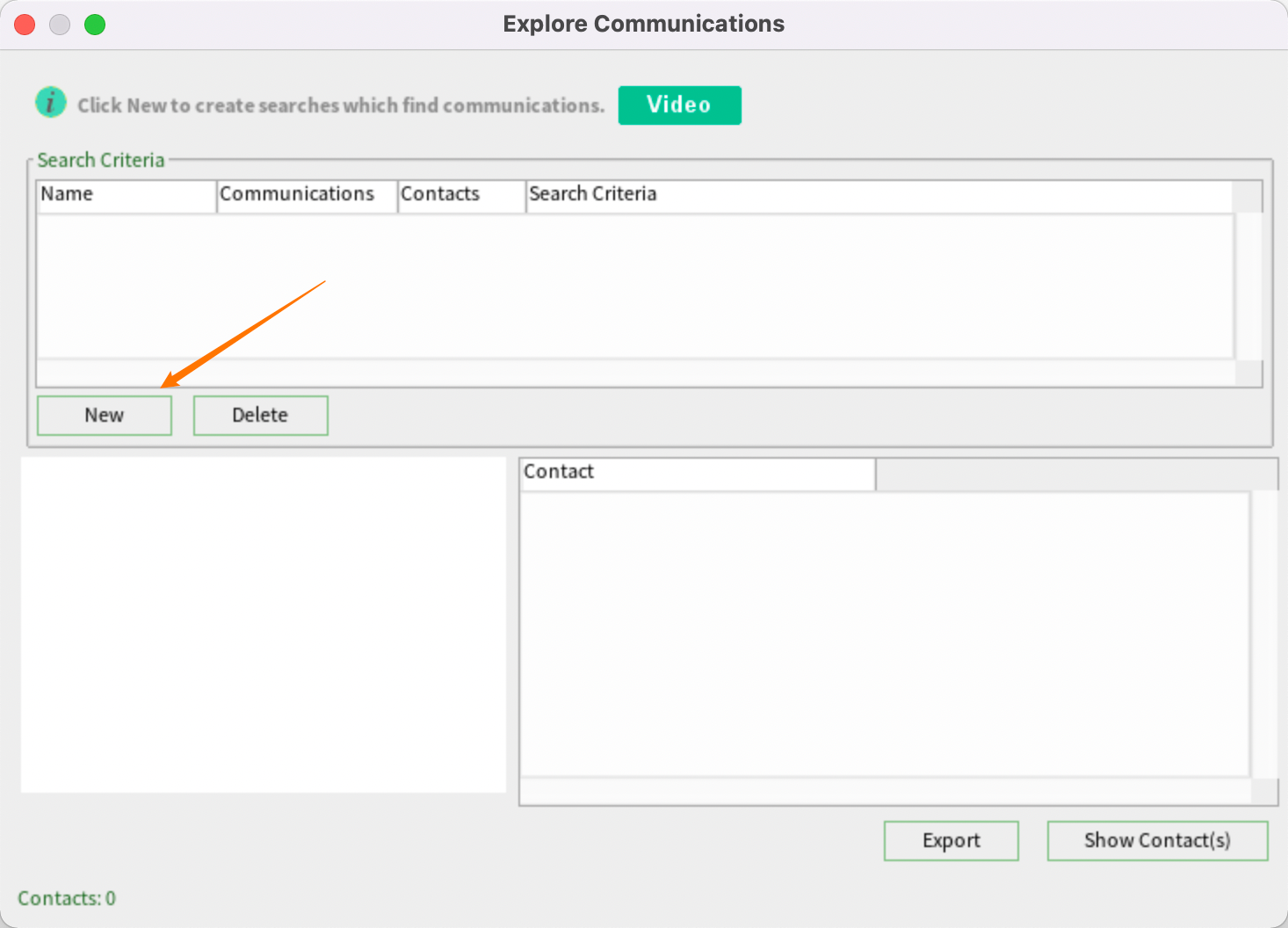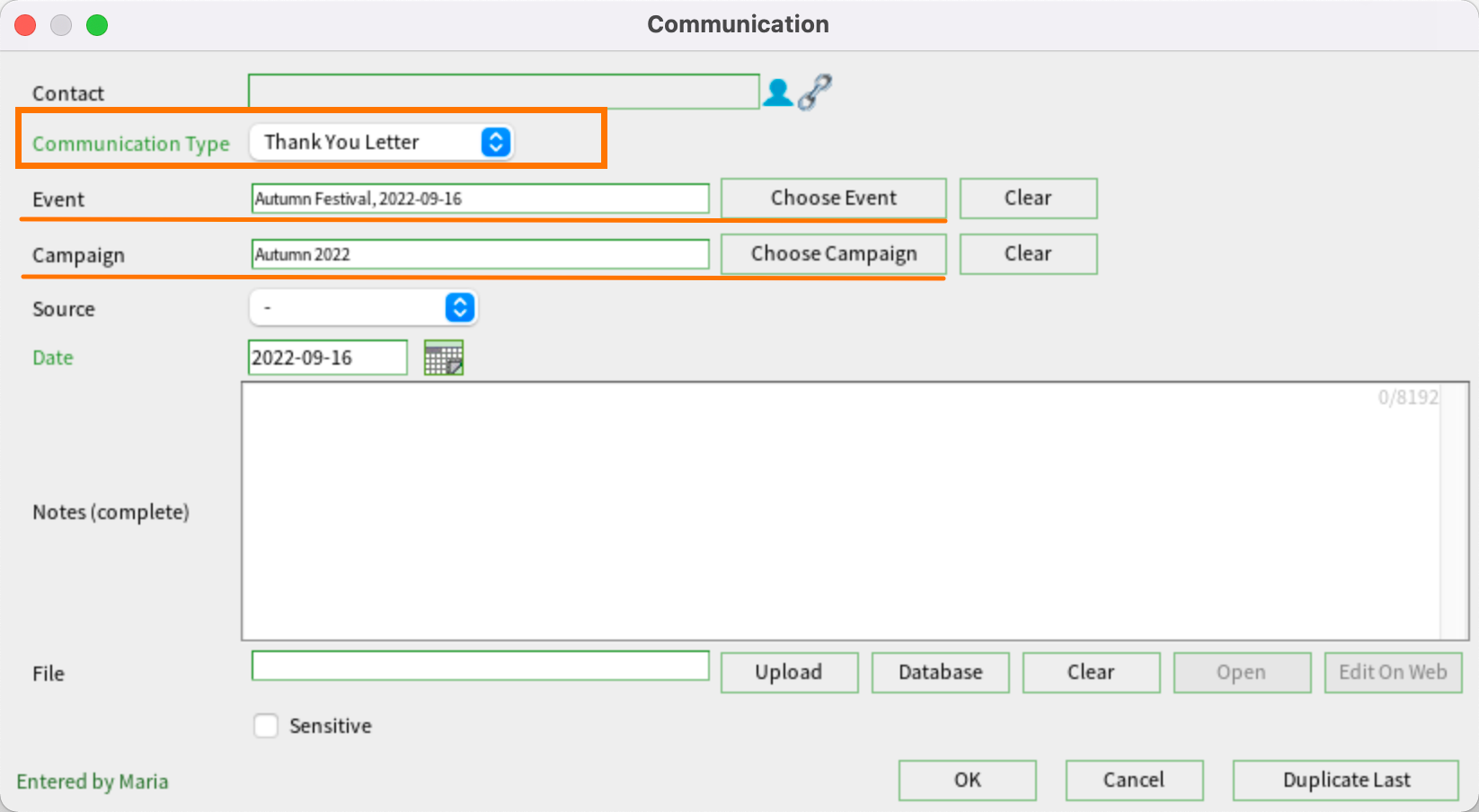How to Explore Communications records
In the Communications window under Reports is the Explore button.
This button allows you to set up multiple searches and compare the results.
For example, let’s say you want to see everyone solicited in your last campaign, who attended an event that was part of that campaign and who donated as a result. The first step is to define your search criteria. To do this, click New.

Name your search. I this example, we’ll name the first one “Solicited.”
The next step is to define the communications to be found. You can define the search by date range, campaigns, communication types, and events.
In this case we want to find everyone who was solicited under Autumn campaign, so we’ll add this campaign to the criteria.
Then under Communication Types, choose “Solicitation.” Click OK.
Here you’ll see the results of our “Solicited” search. Note that 135 communication records match the search criteria, and that these communications identify 135 distinct contacts.
Now we need to find who attended the “Autumn Festival” that was part of this Autumn campaign.
Click New. We’ll call this one “Attended.” Sumac records event attendance as a communication type so we’ll find it here.
Once again, Sumac instantly performs the search and shows the results.
Now we want to find which contacts donated to the campaign. Click New, and we’ll name this search “Donated.” You’ll notice that “Donation” is not an option under Communication Types. However, any time we receive a donation, we send out a thank you letter, so we can choose the Communication Type: Thank You Letter, and select the Autumn campaign, then click OK.
If you select all the criteria, Sumac generates a Venn diagram showing contacts who fit all or one of the criteria.
To have a closer look, the name of each search and each number in the Venn Diagram are clickable.
So, to look at people who were solicited and attended the event, but did not donate, click the number 81, and Sumac shows the contacts in the bottom right of the window. If you decide that you want to see the full contact details of these 81 people, or perform some action, like send them all an email, click Show Contacts to see them in the Contacts list window. You now have all the power of the contacts list.
You’ll find that Explore Communications comes in very handy, but it only works if you take care to track your communications properly.
Sumac can automatically save communication records when you perform communications by doing mail merge, generating labels, or sending bulk email.
When saving these communication records, be sure to use appropriate communication types and relate them to the relevant events and campaigns.

Related Articles
What is in a contact record
Contact records store core information for each contact in your database. To open a contact's record, double-click the contact in the Contacts list. You'll notice there are several tabs across the top of the contact record for storing different kinds ...Analyze & Report: Explore Donations
Explore Donations gives you a quick overview of past donations, making it easy to look for patterns, and compare past months and years. Start by opening the Donations list under Fundraising, then click to expand Reports. Choose Explore. Define the ...How to find a copy of a receipt you have sent
Go to Communications > Receipting > Receipt History On the Receipt History page, you can filter to find your receipt by receipt Batch number, receipt number, send date, donor, etc. To filter, click the inverted triangle. Click the grey triangle to ...How to Bulk Edit
Bulk edit lets you change multiple records at once. It's a really handy tool and can be used in many lists in sumac. Let's use the contact list for this example. We'll standardize the way State are stored. In the example, some people used NV others ...Receipt Print Jobs and Receipt PDF Archive
In Communications, under Receipting click Receipt PDFs and Print Jobs In the Receipt PDFs and Print Jobs, filter by date. Once your date(s) is found click it to save this Print Job to your computer. Save the PDF file in your preferred location on ...
Societ Academy
Learn what you need to know, any time. Free!
- High quality training on demand - sessions are available every day, so you can access training that fits into your schedule.
- Training sessions that are easy to follow - helpful tips throughout each session, and access to training moderators ensure your questions get answered.
- A certificate of completion - you can request a certificate of completion for every session you attend.